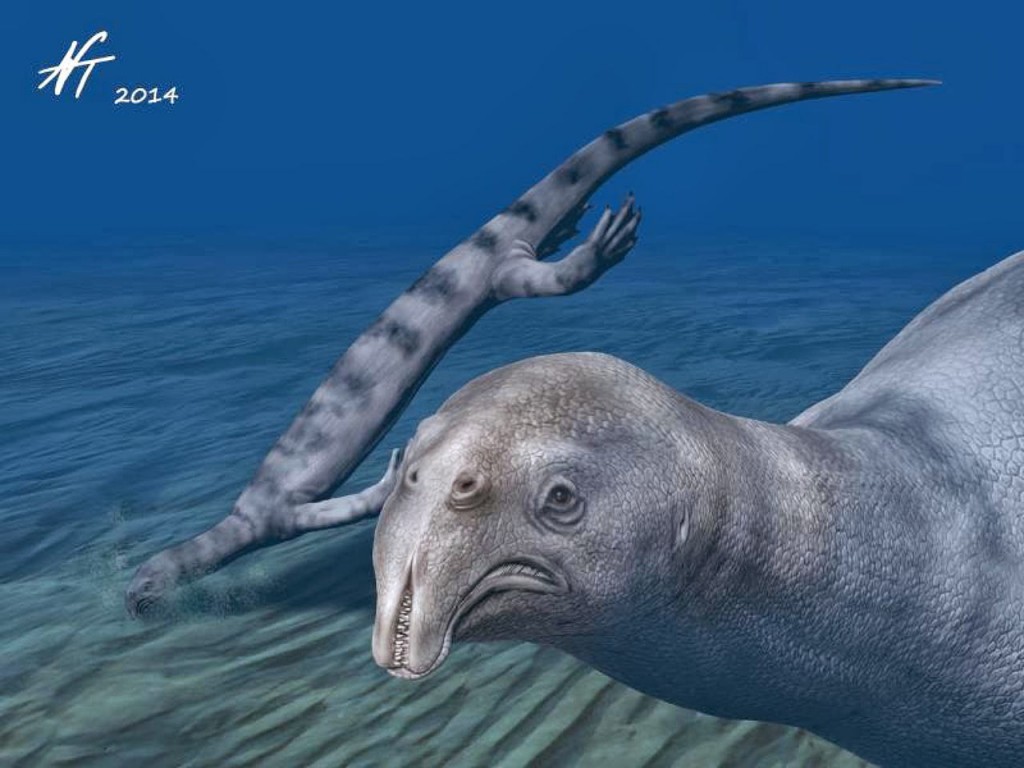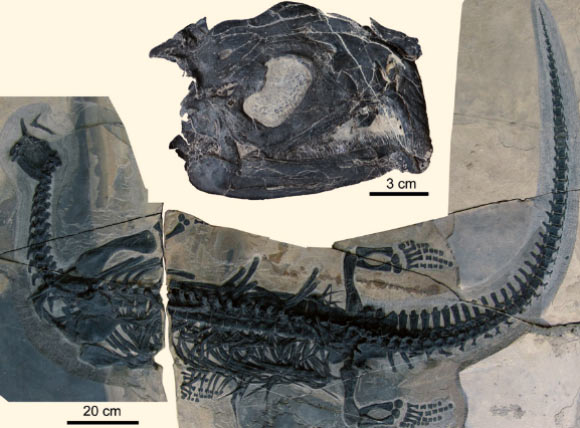Dr Xiao-Chun Wu and his colleagues named the new prehistoric creature Atopodentatus unicus and suggest it belonged to a group of reptiles called the sauropterygians.
“Generic name is derived from the Latin atopo for the peculiar dentition and dentatus for teeth; the specific name is derived from the Latin unicus for its unique morphology,” the scientists said in a paper published in the journal Naturwissenschaften.

This is an artist’s impression of Atopodentatus unicus. Image credit: © Nobu Tamura, 2014 (spinops.blogspot.com).
Atopodentatus unicus measured about 3 m long and had a long body, short neck and special adaptations for a fully aquatic or semi-aquatic lifestyle.
Its nearly complete skeleton and a left lateral side of the skull were collected from the middle Triassic of Guanling Formation near Daaozi village, Yunnan, China.
The most distinguishing characteristic of Atopodentatus unicus is its bizarre mouth.
On each side of the mouth, the reptile had about 35 small needle-like teeth in the front of the upper jaw, about 140 small needle-like teeth in the rest of the upper jaw (at least 100 in the horizontal portion and around 35 in the vertical portion), and more than 190 teeth in the lower jaw (about 100 in the horizontal portion and 90 in the shovel-headed anterior end). The teeth were covered by a layer of enamel.
According to Dr Wu’s team, Atopodentatus unicus may have been adapted to a way of bottom-filter feeding in water.
“It is obvious that such delicate teeth are not strong enough to catch prey, but were probably used as a barrier to filter microorganisms or benthic invertebrates such as sea worms,” they said.
“These were collected by the specialized jaws, which may have functioned as a shovel or pushdozer and a grasper or scratcher.”
Source:article by Sergio Prostak



 March 9th, 2014
March 9th, 2014  Riffin
Riffin 
 Posted in
Posted in  Tags:
Tags: 